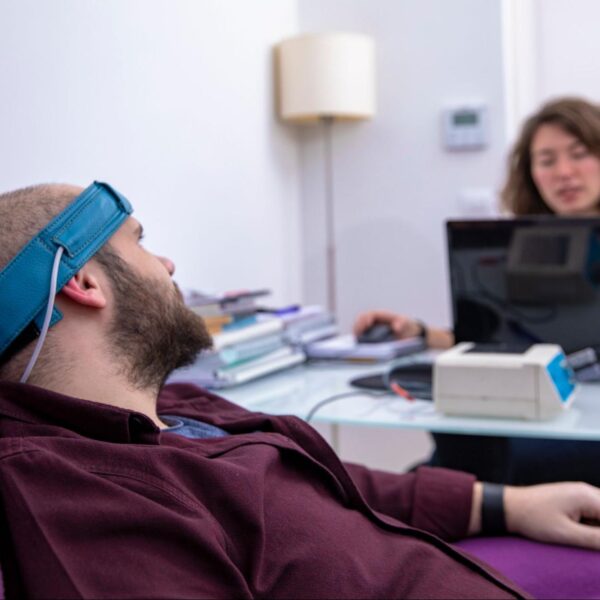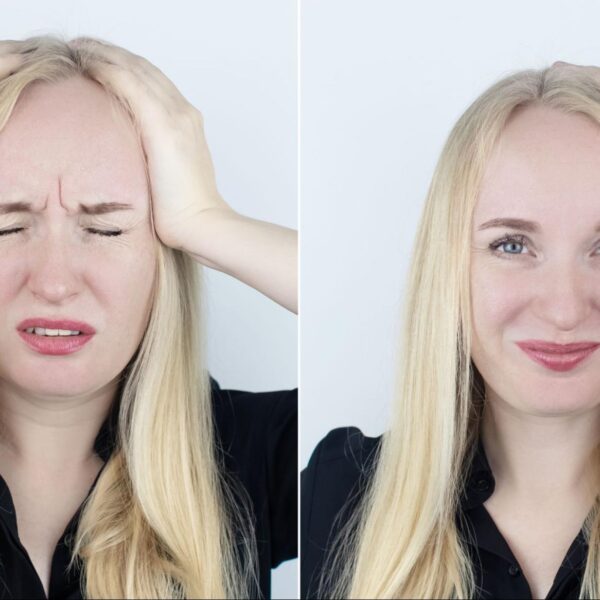Have a question?
New York Locations
Book Now
Have a question?
Book an appointment
4 New York Locations
Menu
Have a question?
New York Locations
Biofeedback has shifted from the outskirts of medical treatments since the ’60s and ’70s to a mainstream methodology today with a focus on treating medical conditions and improving human performance. Biofeedback NY is a mind-body therapy that can help improve both mental and physical health.
The advancement of biofeedback has been driven by years of scientific research showing the incredible connection between the mind and body and how we can use the power of the mind to improve various types of physical and mental issues and functions, from reducing hyperactivity and depression, to lessening the effects of certain diseases
Biofeedback helps provide information to put you more in control of your body’s functions. The process allows a person to learn how to change physiological activity in the pursuit of improving health.
The definition of biofeedback is using monitoring via electrical sensors connected to the body to gain a greater awareness of physiological functions. Using the information from the monitors, you can make subtle changes in your mind and body to achieve your unique goals.
This treatment is often used to improve health conditions, mental issues, and chronic pain.


Precise instruments measure physiological activity, such as heart functions, brainwaves, muscle activity, breathing, and skin temperature. The patient then begins to test out how to shift and control their thoughts, emotions, behavior, and body to create the desired response. After multiple sessions, the necessary changes can be made by the individual without needing to be monitored.
For example, if the goal was to reduce back pain and muscle tension, you could focus on relaxing certain muscles in the center of your back or your shoulder muscles while analyzing the feedback you’re receiving from the computer to understand what’s helping you achieve your desired result.
If a patient was using biofeedback for high blood pressure issues, the biofeedback therapist would use the psychophysiological profile to create a specific training plan to improve physiological occurrences that are correlated with high blood pressure. During the session, biofeedback doctors may discover certain symptoms that aggravate blood pressure issues, such as:

The information gained from the biofeedback can help patients reduce blood pressure. Some studies show that biofeedback is most effective when used for stress management training with education in relaxation techniques and deep breathing methods.
65% of participants were able to stop their medications while 24% of patients were able to cut their required medication in half. The best part about biofeedback is that users learn to control their own bodies to treat their condition.
Biofeedback is a helpful tool for pelvic floor muscle rehabilitation by helping people distinguish between their abdominal muscles and the muscles used to control the bladder, known as the pelvic floor muscles, so they know which muscles they are strengthening while doing certain exercises.
Strengthening the muscles round the pelvic floor is essential for controlling the bladder effectively.
The biofeedback sensors allow the patient to receive auditory or visual information about the status of pelvic muscle activity, guiding the patient to learn whether they are performing proper muscle contractions or not. While using the information from the sensors, they can practice their pelvic floor exercises and know definitively if they are doing them correctly.
Since it’s common for women to use the wrong muscles when attempting exercises to strengthen the pelvic floor, monitoring the muscles in the abdominal region allows the user to know if they are using their ab muscles or the ones that enhance bladder control. All of the information provided during the session can be reviewed from one visit to the next, helping measure the growth in the strength of the muscle during the time between sessions.

The goal of biofeedback is to manage irritable bowels by gaining better control over the enteric nervous system. This system controls gut function and does so without conscious control. Irritable bowel syndrome can aggravate more than your gut. Sometimes the symptoms of irritable bowel syndrome such as gas, diarrhea and constipation can cause you to feel annoyed, angry, or depressed.
Unfortunately, those emotions can intensify your irritable bowel symptoms. The reverse is true too, meaning positive emotions can help ease your irritable bowel symptoms. The goal of biofeedback is to reduce the amount of negative emotions and increase the positive, which then changes the intensity of the symptoms.
Biofeedback can be used to treat a number of physical and mental conditions. Biofeedback techniques are a proven effective treatment for a variety of psychophysiological, mood and behavior conditions. Biofeedback is effective in treating the following conditions:

Visit The Association for Applied Psychophysiology and Biofeedback, Inc. (AAPD) for the extensive list of disorders and treatments that can benefit from biofeedback.

Biofeedback is the therapy of choice for various reasons. It’s completely non-invasive and doesn’t cause pain or require any recovery time. It many cases, biofeedback may help decrease the amount of medication needed or eliminate it altogether. This can be a lifelong advantage as many medications are taken long-term and can be very expensive and taxing for the liver to process. If medication is still deemed necessary for optimal health, biofeedback can also improve the benefits of those prescription drugs.
When medication isn’t an option, either because a woman is pregnant and can’t take medication or medication isn’t wanted in cases of addiction, biofeedback can help relieve symptoms in place of taking medication.
Most people also find that biofeedback makes them feel more empowered and in charge of their own well-being and health since they’re learning how to change their own body’s responses to stimuli and learning how to further connect the mind and body.
A huge advantage of biofeedback is that there are little to no side effects. There have been no negative side effects reported. In most cases, biofeedback helps you control the symptoms of your condition and can help reduce the need for medication.
Let’s review all the benefits of biofeedback. Biofeedback puts adults in the driver’s seat of their health by learning techniques to use the brain to change and control body functions. Biofeedback results in giving control back to the patient and letting them be in charge of their own care by implementing the techniques they learned during biofeedback sessions at home, providing lasting results. Another advantage is that biofeedback costs less than other alternative therapies and lifelong use of medications. Even after the biofeedback sessions are over, the brain remembers the new, efficient behaviors or pathways that have been created and may also help drugs and other therapies work better or be unnecessary altogether

Dr. Roya Jafari Hassad provides biofeedback at her offices in Manhattan, Long Island and Queens. Contact us to find a location near you.
Biofeedback is not covered by insurance.
12 Bond St, Unit C2 Great Neck NY 11021
895 Park Ave, Suite 1 B, New York, NY 10075
41-02 75th Street First floor Elmhurst, NY 11373
109 East 36th Street, NY 10016